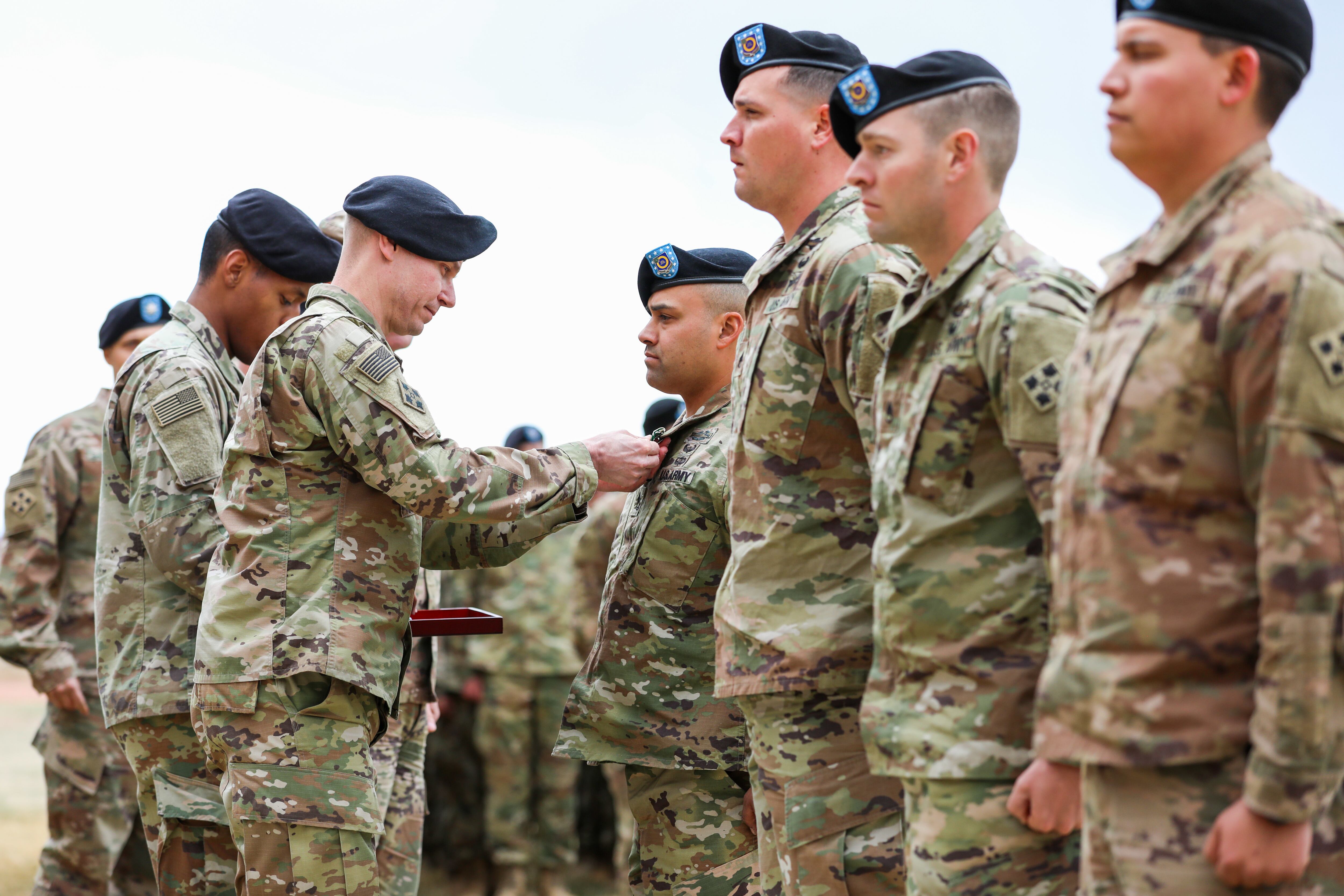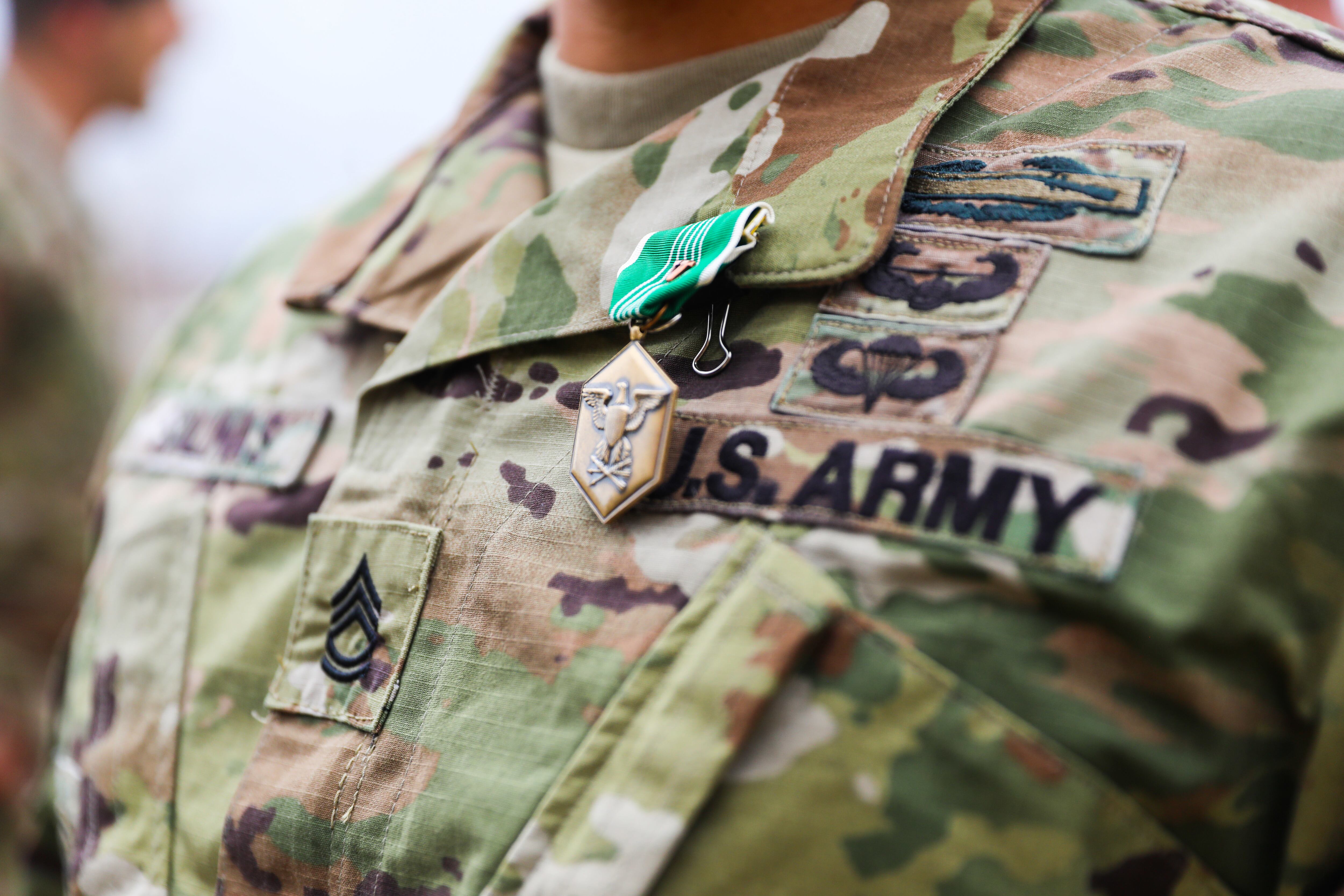Four soldiers received the Army Commendation Medal with Valor on April 12 for their actions during an improvised explosive device attack involving multiple blasts, one of which took the life of an Army explosive ordnance disposal specialist in southern Afghanistan last year.
The soldiers, who were all assigned to the 2nd Infantry Brigade Combat Team, 4th Infantry Division, out of Fort Carson, Colorado, received the awards for their actions while serving as part of Task Force Stalwart in Helmand province, Afghanistan, six months ago, according to copies of their award citations and narratives of action provided to Army Times.
On the morning of Oct. 4, Sgt. 1st Class Timoteo Salinas, Staff Sgt. Andrew Brant, Staff Sgt. Ryan Bomze and Spc. Alexander Jimenez were part of the quick reaction force for a fellow platoon from Task Force Stalwart that was out on patrol.
The platoon encountered an improvised explosive device near Camp Dwyer in Garmsir District, which immobilized one of their Mine Resistant Ambush Protected Vehicles.
The quick reaction element was notified and sent out to assist in recovering the vehicle. While the troops provided security, an EOD team cleared a path to the rear of the disabled vehicle using counter-IED hand-held devices to extract six soldiers still inside.
As he cleared around the vehicle to the trapped soldiers, a second IED detonated near Sgt. James Slape, 23, of the North Carolina National Guard’s 430th Ordnance Company.
Another EOD soldier pulled his teammate from the top of the hill, roughly 15 feet from the blast site, and called for a medic, according to the narrative of events.
“Knowing that the site had not been cleared and with total disregard to his own life, SPC Jimenez ran from his vehicle, approximately 50 meters, to the site of the casualty,” the narrative for Jimenez, a medic, reads.
Jimenez was joined by Brant and Salinas, while Bomze assessed the EOD soldier who survived and began looking for a helicopter landing zone while radioing for a medical evacuation of the gravely wounded soldier.
Unknown to them at the time, the site they were clearing would later be determined to be a minefield. A third IED would be found within 30 feet of where the troops sat down to treat Slape.

Brant and Jimenez attempted to control the bleeding using tourniquets. They were only able to partially do so and Jimenez began using his bodyweight to help stop the blood loss.
“[Jimenez] manually applied pressure on the artery of the left leg and applied Combat Gauze to stop the bleeding,” his citation reads.
The soldiers were able to get the bleeding under control and turned their focus towards keeping the airways open, using a needle decompression kit on the wounded soldier’s chest to relieve pressure inside and placing an intravenous infusion, or IV, line into his arm.
Jimenez also instructed the placing of an intraosseous infusion line after the IV wasn’t deemed effective, meaning the fluids would be injected directly into the bone marrow.
The soldiers loaded Slape onto a litter and moved him to the helicopter landing zone. After the wounded EOD tech was airborne, the remaining soldiers continued to work through the vehicle recovery mission.

A route clearance team arrived to assist the quick reaction element, only to strike a fourth IED and discover two more. The soldiers would later hear that Slape did not live.
After Slape’s death, the Army National Guard began an AR 15-6 investigation “into the training and equipping of the 430th EOD Company for their mobilization and deployment to Afghanistan,” Lt. Col. Wes Parmer, a Guard spokesman, told Army Times on Dec. 7. The investigation came amid allegations that the EOD unit asked for, but did not receive additional training and equipment before it was deployed to Afghanistan.
Salinas told the Fort Carson officials during the April 12 award ceremony that his top priority after hearing of Slape’s death was talking to the soldiers under his charge.
“Whether they heard about the incident, were at the site the incident happened or helped aid the casualty, soldiers sometimes don’t know how to react afterwards,” Salinas said in a Fort Carson news posting on the Defense Visual Information Distribution Service. “I wanted to let them get their thoughts and feelings out while it was still fresh on their minds.”
“Receiving this award to me personally is not a big deal,” he added. “It’s more rewarding to know that we did everything we could to try to save someone’s life, to me that’s the most important thing.”
Kyle Rempfer was an editor and reporter who has covered combat operations, criminal cases, foreign military assistance and training accidents. Before entering journalism, Kyle served in U.S. Air Force Special Tactics and deployed in 2014 to Paktika Province, Afghanistan, and Baghdad, Iraq.





